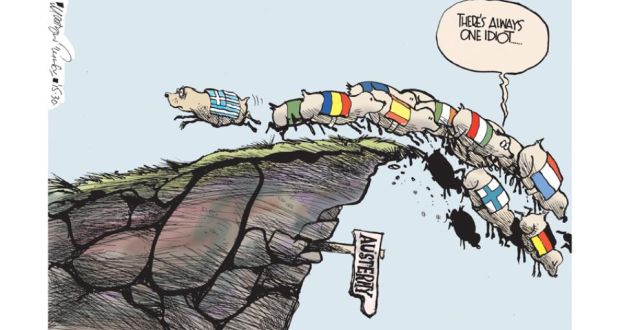
http://bilbo.economicoutlook.net/blog/?p=30259
"In the virtual world, you are not the only person constructing your identity" (Van Luyn, 2015). On Facebook, the software itself and other people, are producing an online self (McNeill, 2012).
Tread warily in the posthumanist, social media spaces of Facebook's networked narratives. It is rocky terrain, and only the most adept and articulate users can retain 'humanist' narrative. In fact, the humanist narrative has disappeared in cyberspace. In this contested, geographical space 'authentic self' and 'cultural identity' are up for the taking, as personal narratives are reconstituted and remade intertextually.
McNeill tells us the "I" is missing in social networks. The "I" may be individuality of the human as whole beings with capacities for rationality, consciousness and agency. Within this concept 'human' is at the centre of meaning, and action, and in charge of destiny.
When humans interact with the 'machine' on social media websites, posthumanism is 'effected'. Inside these psychic boundaries, humans have become disembodied and minds have melded with the machine. This transformation displaces the unified human from the centre, who is 'acted upon' by Facebook stimuli.
Software and Facebook 'friends' are our co-creators. Perceptions of our 'true' and 'ideal' self are re-created. We desire to 'fit in' with whatever social media portrays as acceptable and ideal.
Posthumanist meanings reside in the narrative which becomes exterior to the human and the human is reconstituted into another form. The cyborg emerges from the cocoon at the conjunction of technology and 'Facebooked' narrative. In this intergenerational transformation, the human may become transhumanist. Individual identity is displaced and powerful 'groupthink' takes form. The 'hive' mind is the new narrative. The human becomes the machine, as individual agency is admonished. The group is all powerful and all controlling. A brave new world for the human extant.
http://www.examiner.com/article/social-me-dia-how-social-media-effects-identity
References
McNeill, L. (2012). There is no "I" in network: Social networking sites and posthuman auto/biography. Biography: An Interdisciplinary Quarterly, 35(1), 65.
Van Luyn, A. (2015). BA1002: Our space: Networks, narratives and the making of place. Lecture 6: Networked Narratives: Intertextuality. [PowerPoint slides]. Retrieved from http://learnjcu/jcu.edu.au
Images
Retrieved from http://www.examiner.com/article/social-me-dia-how-social-media-effects-identity
Retrieved from http://bilbo.economicoutlook.net/blog/?p=30259
No comments:
Post a Comment
Note: only a member of this blog may post a comment.